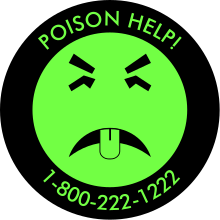While we were in the doctor’s office on Friday, we were musing about the biohazard symbol…and wondering what it meant and how it came to be chosen. So thanks to the wonders of smart phones, my hubby looked it up. 😉
I’m just going to quote directly from the source on this one.
“We wanted something that was memorable but meaningless, so we could educate people as to what it means.” In an article in Science
in 1967, the symbol was presented as the new standard for all
biological hazards (“biohazards”). The article explained that over 40
symbols were drawn up by Dow artists, and all of the symbols
investigated had to meet a number of criteria: “(i) striking in form in
order to draw immediate attention; (ii) unique and unambiguous, in order
not to be confused with symbols used for other purposes; (iii) quickly
recognizable and easily recalled; (iv) easily stenciled; (v)
symmetrical, in order to appear identical from all angles of approach;
and (vi) acceptable to groups of varying ethnic backgrounds.” The chosen
scored the best on nationwide testing for memorability.
Interesting, eh?
I’m fond of this one, LOL. Basically a drawing of a shout, it’s just a warning or hazard sign–a rather generic one, used in Europe when a specific hazard doesn’t fit. So you might see it on a road, for instance. Though apparently some places insist on a description sign posted under it so people know what they’re to be exclaiming about.
And finally…
The skull and crossbones is a rather universal symbol for poisonous material. But because it’s also on the Jolly Roger…and because playing pirates has become so much fun…in the U.S. the good ol’ skull is often replaced with Mr. Yuk, because they’re afraid the above will actually encourage children to play with it. Go figure!
And sheesh, what a bleak post, LOL. But hopefully as interesting to you as it was for me! Now go out and have a hazard-free day. 😉







 Roseanna M. White is a bestselling, Christy Award winning author who has long claimed that words are the air she breathes. When not writing fiction, she’s homeschooling her two kids, editing, designing book covers, and pretending her house will clean itself. Roseanna is the author of a slew of historical novels that span several continents and thousands of years. Spies and war and mayhem always seem to find their way into her books…to offset her real life, which is blessedly ordinary.
Roseanna M. White is a bestselling, Christy Award winning author who has long claimed that words are the air she breathes. When not writing fiction, she’s homeschooling her two kids, editing, designing book covers, and pretending her house will clean itself. Roseanna is the author of a slew of historical novels that span several continents and thousands of years. Spies and war and mayhem always seem to find their way into her books…to offset her real life, which is blessedly ordinary.